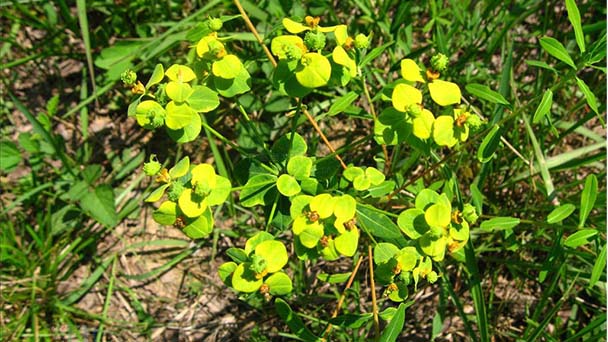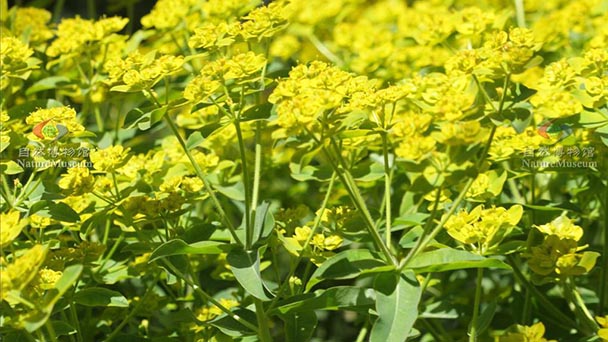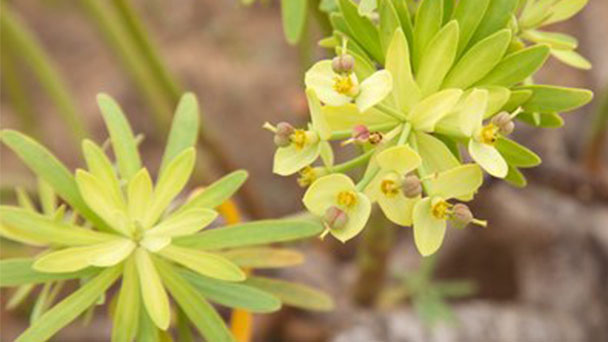Euphorbia Profile
Written by Joy
Sep 27 2020

This genus contains about 2000 species. It is one of the largest genera of angiosperms, which are distributed around the world, especially in Africa and central and South America. There are about 66 species native to China, and another 14 species are grown and naturalized in China, adding up to 80 species.




Euphorbia morphological characteristicsEuphorbia growth habit and growing environment and distributionEuphorbia efficacy and roleEuphorbia patterns
Euphorbia morphological characteristics
Euphorbia belongs to herbs, shrubs, or trees. It's normally annual, biennial, or perennial. The plant body has an emulsion liquid. Roots terete, or fibrous, or with irregular tuberous roots. Leaves often alternate or opposite, less whorled, often entire, less divided or dentate or irregular. Leaves often without petiole, few with petiole. Stipules often absent, few present or drilllike or spiny.Euphorbia growth habit and growing environment and distribution
Euphorbia is famous for its variety, complex habitat and great variability. It is one of the most difficult genera in angiosperms classification. Since Linn(1753) established the genus, there has been no worldwide revision work for a long time, and no regional revision work in its main distribution centers (Africa and central and South America), except for the system established by Boisser (1862) in DC.PROdr. The collation of Euphorbia in China was carried out under this background. Euphorbia, a genus under the family Euphorbiaceae, can be found in subtropical and temperate regions. There are more than 60 species in China, which are widely distributed throughout the country. Some species are poisonous, while others have stems and leaves that can be used as medicine. Some are for viewing as well.Euphorbia efficacy and role
There are more than 60 kinds in China, which are widely distributed throughout the country. Some kinds are poisonous, and some kinds of stems and leaves can be used as medicine. Some are for viewing.Euphorbia patterns
Variation of this genus is mainly: habits, the ephemeral plant, herb to irrigation and trees, morphologically by leaves (fall) earlier leaf, by alternate to the opposite or verticillate, compound inflorescence branch by ChanQi, dichasial branched or unbranched to multiple disambiguation inflorescence (that is, a single altar), involucre gland 1, 4-5 rings or majority, Abraham for 2-3 pieces, glands appendages exist or not, and seeds with or without caruncle; In addition to the differences in various forms, the range of variation is indeed so striking that it has been divided into several genera. Throughout the research history of this genus, there has been a relatively large number of ideas in favor of no longer dividing. Based on this, this work adopts a great deal of concept.Latest Updated
- Benefits of Bugleweed - 7 Science-backed Health Benefits
- Bugleweed Dangers & Side Effects - Is It Poisonous?
- How to Plant Evergreen Trees - What You Should Know
- When to Plant Evergreens - Grow Guide for Evergreen Trees
- 12 Wonderful Evergreen Shrubs for Your Garden
- 12 Popular Evergreen Plants with Pictures for Beginners
- When And How To Prune A Lilac Bush Like a Pro
- How to Grow & Care for Lilac Vine (Hardenbergia Violacea)
- Japanese Lilac Tree (Syringa Reticulata) Care & Propagation Guide
- Shumard Oak Pros and Cons - What to Know
Popular Articles
- Winter maintenance of Antirrhinum Majus
- How to Grow Terminalia Mantaly Tree
- How to Grow and Care for Crossostephium Chinense
- How to grow Antirrhinum Majus in spring
- Peristeria Elata (Dove Orchid) Profile: Info & Care Guide
- Underwatered Snake Plant (Sansevieria Trifasciata) - Signs And How To Fix
- How to Care for Brazilian Jasmine Plant (Mandevilla Sanderi)
- How to Grow & Care for Graptopetalum Purple Delight in Summer
- Rosa Chinensis (China Rose): Plant Growing & Care Tips
- How to Care for Baby Sun Rose (Aptenia Cordifolia)